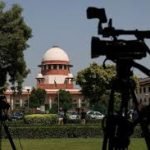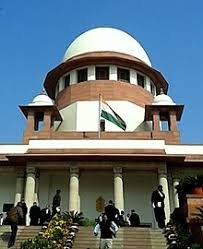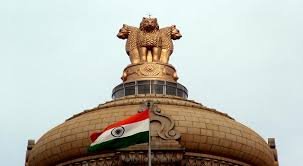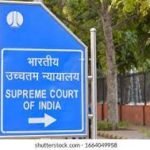This case concerns a trademark dispute between two alcoholic beverage manufacturers over alleged deceptive similarity in their whiskey brands. The appeal related to rejection of interim injunction by Commercial Court and High Court. Appellants fails to get interim injunction even in Supreme Court.
Appellants: Pernod Ricard India Private Limited & Another, producers of popular whiskey brands like ‘BLENDERS PRIDE’ and ‘IMPERIAL BLUE’. These brands have substantial annual sales exceeding INR 1,700 Crores and INR 2,700 Crores respectively, and are registered trademarks with a long history of use. The appellants also hold a registered trademark for ‘SEAGRAM’S’, which is embossed on their bottles.
Respondent: Karanveer Singh Chhabra, who began marketing whiskey under the mark ‘LONDON PRIDE’ in May 2019.
The Dispute: The appellants alleged that the respondent’s ‘LONDON PRIDE’ whiskey, including its packaging, label design, colour scheme, and overall trade dress, was deceptively similar to their ‘BLENDERS PRIDE’ product, leading to trademark infringement and passing off. They also noted the respondent’s use of an embossed ‘SEAGRAM’S’ mark.
Procedural Journey:
The Commercial Court initially rejected the appellants’ request for an interim injunction on November 26, 2020.
The High Court subsequently dismissed the appellants’ appeal on November 3, 2023, affirming the Commercial Court’s decision. The High Court stated there was no prima facie case of infringement or passing off. It found the respondent’s mark entirely dissimilar in name, appearance, and composition, despite noting visual and phonetic similarities earlier. The High Court also considered the word ‘PRIDE’ to be publici juris (common use) and thus not subject to exclusive rights.
Law Involved: The Trademark Compass
The judgment primarily draws upon the Trade Marks Act, 1999, and established legal principles concerning trademark protection and infringement. Key concepts include:
Definition of “Deceptively Similar”: A mark is deemed deceptively similar if it nearly resembles another mark as to be likely to deceive or cause confusion.
No Likelihood of Confusion: The foundational principle of trademark law is that there must be no likelihood of confusion in the mind of the average consumer.
Anti-Dissection Rule: Composite marks must be considered as a whole, not by dissecting individual elements.
Dominant Feature Test: Courts determine if a mark is deceptively similar by identifying its most distinctive, memorable, and influential feature in consumer perception.
Average Consumer Test and Imperfect Recollection: Similarity is assessed from the viewpoint of an average consumer with imperfect recollection, emphasizing overall impression rather than minute differences.
No Exclusive Right Over Common/Descriptive Terms: Generally, no exclusive right exists over common or descriptive terms unless they have acquired a secondary meaning.
Post-Sale Confusion Doctrine: A concept recognizing confusion that may occur after the point of sale, for example, when others see the purchased product and assume its origin.
Holding and Reasoning
It is a settled principle of trademark law that deceptive similarity does not necessitate exact imitation. What is material is the likelihood of confusion or association in the minds of consumers arising from an overall resemblance between the competing marks. The applicable standard is that of an average consumer with imperfect recollection.
While comparing rival marks, Courts must assess the marks in their entirety, rather than dissecting composite trademarks into isolated components.
The dominant feature of a mark may assist in crossing the preliminary threshold of analysis, but the ultimate inquiry must focus on the overall impression created by the mark – especially in the context of the relevant goods, trade channels, and target consumers. The proper test is not to place the two marks side by side to identify dissimilarities, but to determine whether the impugned mark, when viewed independently, is likely to create an impression of association or common origin in the mind of the average consumer. Even if a particular component of a mark lacks inherent distinctiveness, its imitation may still amount to infringement if it constitutes an essential and distinctive feature of the composite mark as a whole.
Section 17(1) of the Trade Marks Act, 1999 grants exclusive rights only in respect of the mark as registered. Section 17(2) excludes protection for common or non-distinctive elements unless such elements have acquired secondary meaning. Sections 27(2) and 29 preserve the right to institute passing off actions and define the contours of infringement, respectively. Notably, Section 29(3) presumes confusion only where identical marks are used for identical goods – a condition not met in the present case as the marks.
Applying the settled legal standards – including the anti-dissection rule, the overall similarity test, and the perspective of an average consumer – we prima facie find no deceptive similarity between the competing marks that would give rise to confusion.
In the present case, the marks – ‘BLENDERS PRIDE’ and ‘LONDON PRIDE’ – are clearly not identical. Though the products are similar, the branding, packaging, and trade dress of each are materially distinct. The Commercial Court and High Court have rightly held that the term ‘PRIDE’ is publici juris, and commonly used in the liquor industry. The dominant components – ‘BLENDERS’, ‘IMPERIAL BLUE’, and ‘LONDON’ – are entirely different both visually and phonetically, producing distinct overall impressions.
The courts below also correctly observed that the products in question are premium and ultra-premium whiskies, targeted at a discerning consumer base. Such consumers are likely to exercise greater care in their purchase decisions. The distinct trade dress and packaging reduce any likelihood of confusion. The shared use of the laudatory word ‘PRIDE’, in isolation, cannot form the basis for injunctive relief.
Though the appellants heavily rely on the anti-dissection principle, they themselves seek to dissect their composite marks and claim exclusive rights over isolated elements such as ‘PRIDE’ and the use of the colour blue. Their claim, in essence, appears to be based on brand association with the Seagram’s or Pernod Richard portfolio, rather than any legally cognizable infringement.
The allegation regarding the embossing of “Seagram Quality” on the respondent’s bottle was rightly rejected by the Commercial Court. The bottle produced as evidence by the appellants lacked such embossing, and this finding remains unchallenged. The appellants themselves admitted that they failed to furnish any invoice or produce a witness to support their claim, thereby rendering the allegation unreliable and lacking in bona fides.
In the liquor industry, where advertising is highly restricted, brand recognition rests predominantly on packaging and consumer loyalty. Unless the imitation is deliberate and intended to mislead, the chance of confusion is minimal. The allegation of counterfeiting in the present case appears to be speculative and unsupported by credible evidence.
The appellants’ attempt to combine elements from two distinct marks – ‘BLENDERS PRIDE’ and ‘IMPERIAL BLUE’ – to challenge the respondent’s mark ‘LONDON PRIDE’, constitutes a hybrid and untenable pleading. Each mark must be assessed independently, and cherry-picking generic or unregistered features from multiple marks to fabricate a composite case of infringement is not legally sustainable.
It is not in dispute that the word “PRIDE” is not registered as a standalone mark. Nor can the appellants claim exclusivity over common elements like bottle shape or color schemes that are generic and widely used in the industry. While the composite marks ‘BLENDERS PRIDE’ and ‘IMPERIAL BLUE’ are protected, their individual elements – lacking distinctiveness – are not independently enforceable.
The piece-meal approach adopted by the appellants – seeking to combine unrelated features from their own marks – has undermined their claim. Apart from the shared use of a common term, there is no meaningful similarity between the marks. Key elements such as packaging, typography, bottle design, and label layout are materially distinct. In a market segment, where consumers are more discerning, the likelihood of confusion is negligible.
The appellants’ contention that the Commercial Court dissected the marks mechanically is belied by the High Court’s holistic analysis. The High Court correctly noted that ‘BLENDERS PRIDE’ uses a round bottle, whereas ‘LONDON PRIDE’ adopts a cylindrical form. The labels, cartons, and design motifs are entirely different. These variations eliminate the possibility of confusion.
The comparison between ‘IMPERIAL BLUE’ and ‘LONDON PRIDE’ reveals even greater divergence. The marks differ in word arrangement, label structure, and packaging. No similarity exists – visual, phonetic, or structural – that can support a claim for infringement or passing off. Since resemblance is a sine qua non for both causes of action, the appellants’ claim must fail.
Although the appellants hold registrations for the composite marks, no evidence was adduced to demonstrate that any particular element – such as bottle shape, color scheme, or the word “PRIDE” – had acquired distinctiveness or secondary meaning. Trademark protection extends only to distinctive identifiers. Descriptive or commonplace elements fall outside the ambit of protection unless distinctiveness is proved.
Significantly, the appellants’ earlier challenge to United Spirits’ use of the term ‘PRIDE’ in the mark “Royal Challenger American Pride” was unsuccessful. The Punjab and Haryana High Court held that the appellants did not possess an independent registration for the word ‘Pride’, but only for the composite mark ‘Blenders Pride’. Accordingly, they could not claim any exclusive or enforceable rights over the standalone word ‘Pride’. The Court further observed that having failed to object to the registration of the impugned mark before the Trade Marks Registry, the appellants were estopped from asserting such rights subsequently. This decision was upheld by this Court in SLP (C) No. 17674/2023 dismissed on 06.09.2023. Therefore, the appellants’ present attempt is contrary to law and settled principles of equity.
In view of the foregoing analysis, Supreme Court found no ground to interfere with the concurrent findings of the Commercial Court and the High Court. The appellants have failed to establish a prima facie case of deceptive similarity that could justify the grant of interim injunction.
PERNOD RICARD INDIA PRIVATE LIMITED V. KARANVEER SINGH CHHABRA
Supreme Court: 2025 INSC 981(DoJ 14-08-2025)








